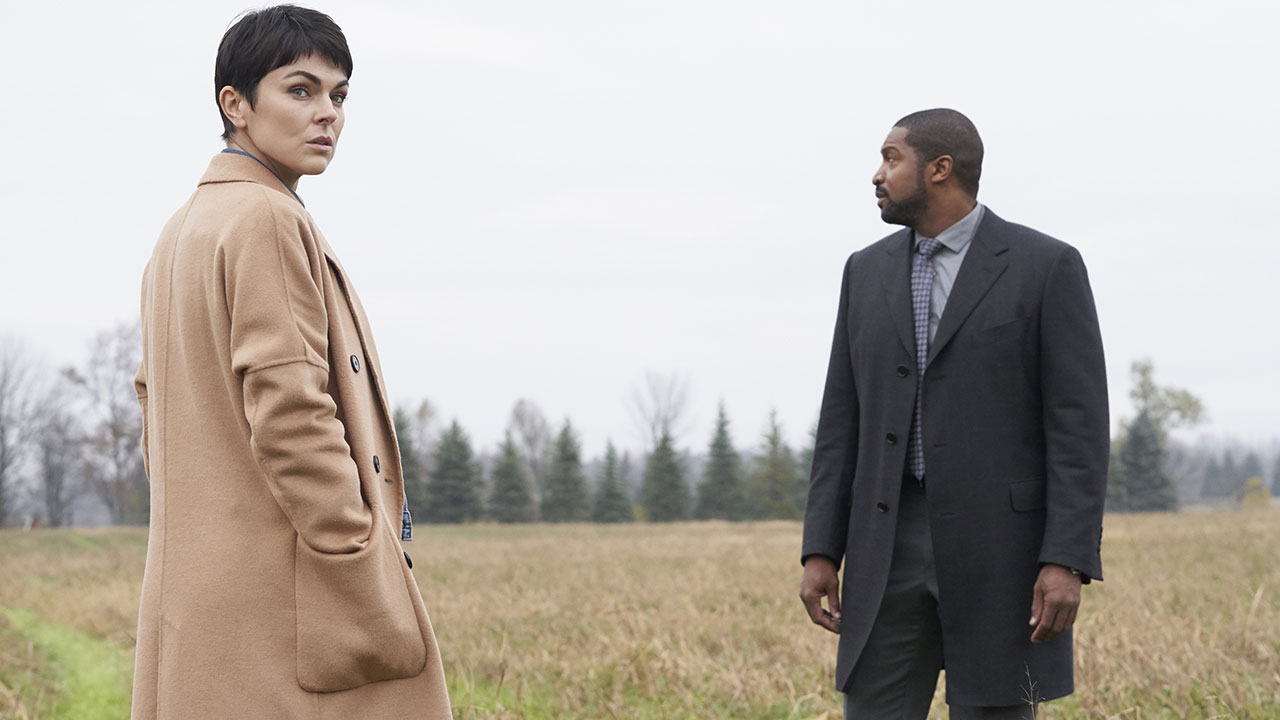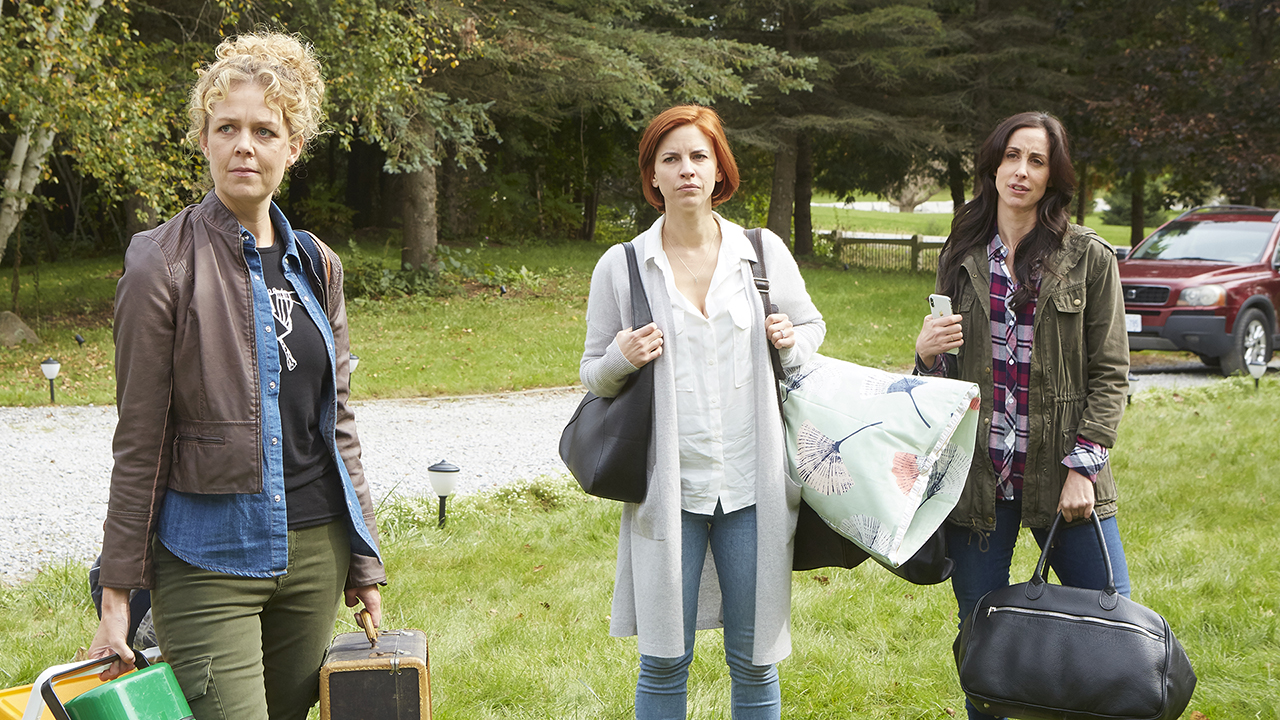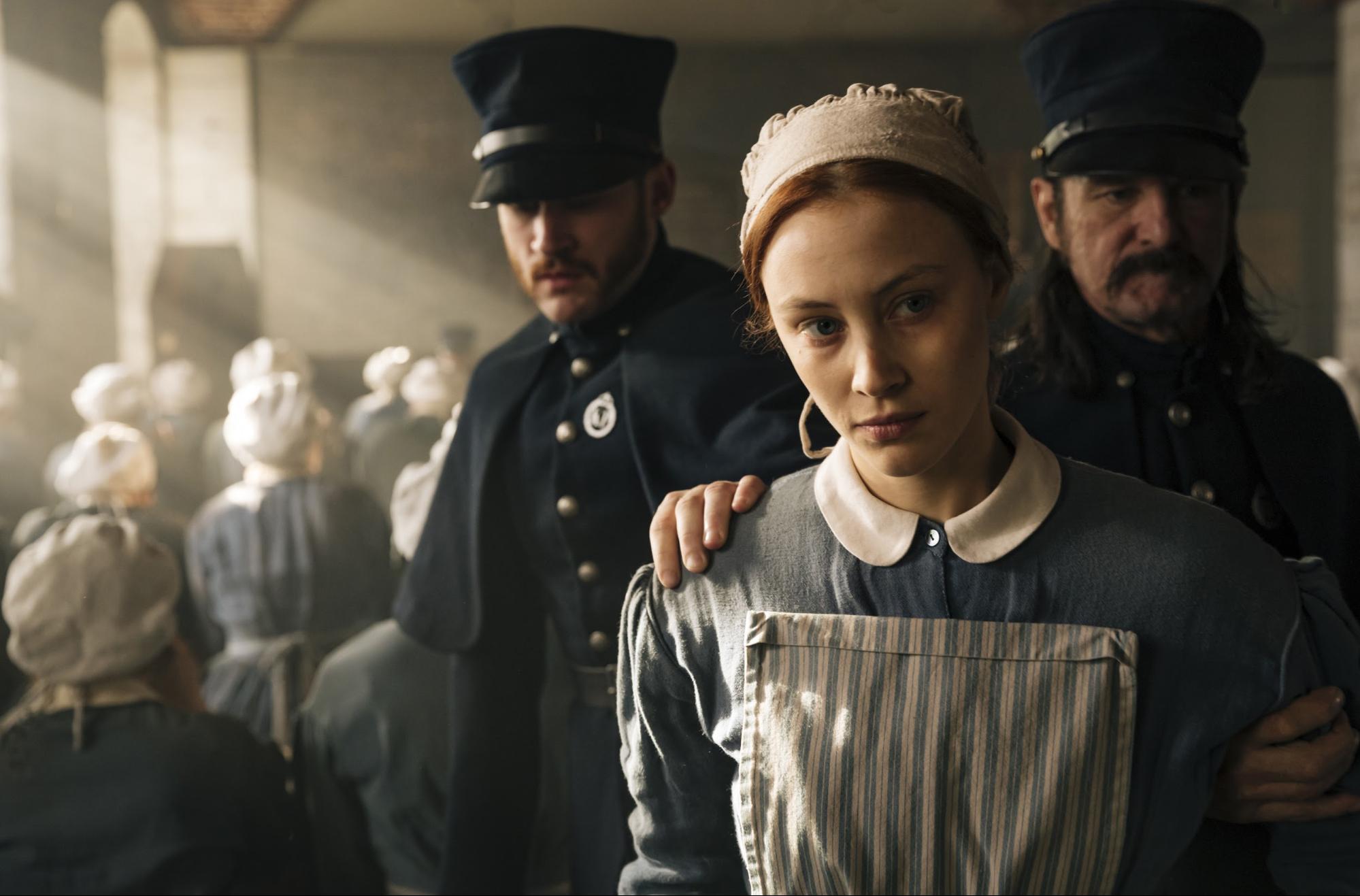Canadian TV Is Popular, Thanks to America
Credit to Author: Frederick Blichert| Date: Fri, 12 Jul 2019 10:00:00 +0000
If you’re anything like me, you love seeing your city onscreen. Having alternated between Vancouver and Toronto over the last five years, it’s felt like half the shows on TV are shot in my backyard. They’re usually not Canadian shows though. Not really. We’re overwhelmed by movies and TV from our southern neighbours each year—the top 10 commercial TV shows watched in Canada in 2018 were all American— so maybe catching a glimpse of my public library branch or the convenience store down the street serves as just a small reminder that we’re here. We’re part of the pop culture we consume, even if just as literal set dressing.
But we have a lot of genuinely Canadian programming too—shows made for us by us, like Schitt’s Creek, Workin’ Moms, Ruptures, Letterkenny, Faits divers, Cardinal, and more. And there’s a huge number of shows in between, whether co-productions or locally-shot foreign series—those series that aren’t always immediately recognizable as Canadian, but have enough Canadian blood in them to qualify for dual citizenship at the very least.
Anxieties around Canadian content (CanCon for short) go way, way back, stemming from fears that the U.S. was going to saturate the market with foreign cultural productions. (And it should be noted this is largely a problem just for English Canada as Quebec has its own, relatively thriving TV and film industry.) And that fear was perfectly well founded, according to Canadian artists.
“Our population is equivalent to California,” Beth Janson, CEO of the Academy of Canadian Cinema and Television, said. “Just in terms of volume, we’re playing a losing game if we are trying to write and produce our own stories.”
So Canadian television has been fostered through the years, through tax incentives, funding initiatives, and broadcasting regulations that have ensured we were represented, even when we didn’t always know it. “We just take a lot of Canadian content for granted,” says Janson. “We don’t think about it. We don’t think about Mr. Dressup or The Littlest Hobo or Degrassi. We sort of know that that’s Canadian, but it’s part of our cultural narrative.”
And we often get bogged down in the politics of Canadianness, while sleeping on the actual work. Janson points to Schitt’s Creek, a smart, hilarious, and heartfelt show from the CBC that has become a big hit in the U.S. in its later seasons. “It’s only when it took off in the States—and it sort of became this phenomenon—that we started to treat it with respect and look at it critically, in a way,” she says.
If the question of Canadian content feels abstract or academic, it actually has a huge impact on Canada, not just culturally but economically.
Toronto’s film and TV industry alone employed over 24,000 full-time workers in 2017, and invested $1.8 billion in filming on location in the city. B.C. is hitting even higher numbers, with industry jobs growing by 40 percent year over year in 2017. Most of that growth came from a rising demand for streaming content on sites like Netflix, like Vancouver-shot Netflix originals The Chilling Adventures of Sabrina, A Series of Unfortunate Events, Lost in Space, and Altered Carbon.
Nationally, the industry spent over $7.5 billion, more than $2.6 billion of which represented salaries, wages, commissions and benefits.
In the U.S., New York’s film and television industry alone employs almost 90,000 people yearly, while California employs more than 190,000, with the US paying out roughly $50-billion to industry employees alone. Canada clearly has stiff competition if we’re playing the numbers.
If Canada is just serving a backdrop for American stories—at least the ones that are being watched by Canadians—though, the fact that such a booming industry serves an international audience more than our own should give us pause. Where are the stories that reflect our national character and the issues that are particular to Canada? Alternately, the fact that Canada is so central to the production of popular culture is rousing. But which is it? And can we parse the “true” provenance of shows made here?
Determining the Canadian-ness of a show can lead you down some profoundly weird taxonomical rabbit holes. After its first season, CBS’s Supergirl transitioned over to the CW and moved its production from LA to Vancouver, joining other DC superhero shows shot on B.C. Did it become more Canadian by virtue of simply being shot here?
The Canadian Radio-television and Telecommunications Commission (CRTC) lays out definitions of CanCon for very practical reasons. Anyone with a broadcasting license in Canada has to meet a certain quota of CanCon to remain in business.
Does having a Canadian showrunner do the trick? Does it have to be shot in Canada or feature Canadian actors?
Yes to all of the above, to a point. There’s no one-size-fits-all definition of Canadian-ness, from the CRTC’s perspective, but there is a threshold and a series of measures for establishing how Canadian a show is.
It’s mostly done with a points system. For example, if your director and screenwriter are Canadian, they get two points each. A Canadian lead performer gets you one point, as does a Canadian director of photography or music composer. The list goes on, up to a total of 10 points. To make a Canadian show, your production has to hit six out of 10.
But the threshold is still a little higher than that. At least one of either the director or screenwriter and at least one out of two lead performers has to be Canadian. And then there’s money. At least 75% of program expenses and 75% of post-production expenses have to go toward services provided by Canadians or Canadian companies. And finally, the show’s producer has to be Canadian—and the role can’t be symbolic. The Canadian producer must be “responsible for monitoring and making decisions pertaining to the program.”
Going by the points system, it’s not clear whether Supergirl did in fact become “more” Canadian by virtue of moving north, and in so doing employing Canadian talent at several levels, from extras, to location scouts, to caterers, to stunt performers and coordinators. Those positions don’t actually count, for the CRTC.

It’s hard to imagine the move would have had zero effect overall. Though getting those six points across enough episodes to qualify isn’t easy, at least not without intention, especially if you already have your cast, music, writing team, and post-production services locked down.
But of the shows that do meet the quota, there’s certainly more to Canadian-ness than a checklist, no? One could conceivably create a Captain America serial or Abraham Lincoln drama and attain a perfect score, all the while making a distinctly American series. Netflix Canada lists Hell On Wheels among the “Canadian TV shows” in its library. Toronto-based eOne was one of six production companies behind the show, which was shot in Alberta, near Calgary. But the cast is primarily American and European and, more importantly, the show is a western, dealing with distinctly American themes of taming the frontier and expanding westward with the construction of the Union Pacific Railroad. It was produced by and for American cable network AMC. It’s hard to accept Netflix’s categorization here, despite some amount of Canadian financing and labour—the show likely doesn’t get 6 out of 10, but even if it did, I’d have reservations about calling it Canadian.
Alternately, Janson points to The Handmaid’s Tale as a perfect example of the need to rethink how we classify Canadian productions. “That series would not exist without the voice of [Canadian author] Margaret Atwood,” she says. But Atwood didn’t hold the TV rights to her book. The novel was instead picked up in the U.S. and developed at an American company: streaming site Hulu. “There was no Canadian money invested in it. But the whole second season was basically directed by Kari Skogland, who’s an amazing Canadian director.” It was also shot in Toronto, and is one of the few “prestige TV” shows that actually has Canadian storylines as it features Canada explicitly as a nation that accepts refugees from the dystopian Gilead (read: America).
Janson would like to see more widespread appreciation for the work that goes into Canadian productions of all kinds, including shows that aren’t necessarily “certified” Canadian, like Handmaid. “In some ways it’s a little bit disrespectful to say that because you’re working on a service production as a DP or a grip or whatever, you’re not contributing as much to it as a writer.”
She points to a growing movement to embrace Canadian contributions to film and TV in more holistic ways, as with Made/Nous, an initiative supported by The Canada Media Fund, Telefilm Canada, and industry partners to celebrate and promote the works of Canadian creators in film, television, video games, and digital entertainment, at home and abroad, including “borderline” works like Killing Eve, FBI, and Battlestar Galactica.
The Canadian broadcasting act does in fact call for something more than a Canadian staff or funding in its wording, calling instead for a reflection of “Canadian attitudes, opinions, ideas, values, and artistic creativity.” While the points system doesn’t necessarily reflect this, the spirit of the law is such that an effort ought to be made to reflect Canada in some way within Canadian productions.

Janis Lundman, an executive producer at Back Alley Film Productions, stressed this point in an interview with VICE. Back Alley has produced shows for CBC, The Movie Network (now Crave), CTV and more. “For us, a Canadian show is a drama that reflects Canadians back to themselves. They’re stories that reflect our values, the changing diversity of our country, the laws, the visuals, the place, the people. To me, that’s Canadian,” she says.
“We have pretty much always situated our shows in Canada. So for example, the show that we’re doing now, Coroner, is very much set in Toronto—Toronto visuals, Toronto references, Canadian accents, the diversity of Toronto in terms of the actors shown on the screen, the different places, from downtown, to Sudbury, to the waterfront, to the airport.”
VICE also reached out to Canada’s national public broadcaster, the CBC, to look more closely at productions that seek to embrace Canadian identities broadly. The CBC’s mandate is itself aligned with the broadcasting act and demands more than a quota for its own television programming.
“Every show and every decision we make is different. There must be a very strong Canadian element, and that can mean any number of things,” says Sally Catto, general manager of programming at the CBC. “It could be about location, it could be about theme, it could be about the talent attached, so it’s a little more complex than a set of…key criteria, which I can’t really give you.”
A certain Canadian-ness is more or less guaranteed when the CBC is involved though, even without some strict set of guidelines outside of maintaining a broadcasting license. “We primarily work with Canadian writers, so right there you’re bringing in authentic Canadian perspectives. That doesn’t mean that the show has to be on the nose—about maple syrup,” says Catto. “We’re serving an incredibly broad audience and a diverse audience.”
That leaves a lot of room for interpretation, which is reasonable when the diversity of Canada is part of what makes a show or slate of shows Canadian, as per the CBC’s mandate. “What is a Canadian? There’s so many different perspectives on that. Different regional approaches. Different approaches depending on your background. Are you a newcomer to Canada or not?” says Lisa Clarkson, executive director, business and rights and content optimization at the CBC.

Canadian-ness can also be gauged, to some extent, by how Canadian shows travel and are received elsewhere. CBC shows like Schitt’s Creek, Kim’s Convenience, and most recently Workin’ Moms have all garnered American audiences by travelling south via Netflix and American channels. Rather than getting assimilated into some nationless library, the shows tend to stand out.
“ Workin’ Moms is now having quite a buzz outside of Canada, and what I love is some of the dialogue I see on Twitter and on social media about Canada’s maternity leave,” says Catto. “Because it’s set in Toronto, they’ve got a year off. And I see responses from audiences outside Canada, like, ‘What? How do they have all this time off? We don’t have that! Must be nice.’”
Canadian audiences might take that kind of cultural detail for granted, but Workin’ Moms’ specifically Canadian setting, following a group of friends balancing work and motherhood in Toronto, is impossible to ignore to anyone in America, where the absurd healthcare costs associated with having a child and the brief time off given to parents make the series’ most basic depictions of motherhood visibly foreign.
Co-productions could muddy the waters of CanCon for the CBC, but they don’t seem to, in practice. The national broadcaster doesn’t relinquish control enough for that, despite requiring a great deal of international partnerships to produce its shows.
“All of our dramas require—cannot be made without—an international distributor onboard or another funding partner from outside Canada, given the cost of production today,” says Catto.
“The impact is bigger when the big foreign partner does not come in,” adds Clarkson, who similarly sees little possibility of securing the kinds of budgets that go to shows with an international appeal for shows aimed at Canadians alone.
Take Alias Grace. While American streaming giant Netflix joined CBC in producing the limited series, it’s written and directed by two Canadians—Sarah Polley and Mary Harron, respectively—and based on a novel by Canadian literary royalty Margaret Atwood. It’s set and shot in historical Upper Canada. And it stars Canadian actors in main and supporting roles.
Another Netflix/CBC co-production, Anne, adapts the Canadian classic Anne of Green Gables. It was shot mostly in Ontario and set in Prince Edward Island. The opening theme is a Tragically Hip song. It was adapted by Canadian writer/producer Moira Walley-Beckett, with a primarily Canadian cast and directors.

“If you look at both Anne and Alias Grace as examples, what’s wonderful is that those are both iconic Canadian stories, and with incredible Canadian talent attached, so I don’t feel that creatively in those two series, anything was compromised,” says Catto.
Netflix has produced a number of arguably Canadian shows on its own too. The Canadian Media Producers Association reports that foreign sources like Netflix have emerged as the biggest contributors to Canadian scripted, English-language TV production. Netflix even reports that it’s on track to exceed a five-year, $500 million commitment to Canadian production.
Netflix’s public policy director in Canada, Stéphane Cardin, explained that the murkiness of the CRTC-certified series and the mostly-Canadian shows produced without meeting quotas isn’t a top concern for the streamer, and it doesn’t limit their classifications. “It is sometimes difficult to reconcile what constitutes certified CanCon versus what doesn’t,” he said.
That means searching for Canadian shows on Netflix leads to some inclusive results, including everything from Hell on Wheels to Degrassi: Next Class, Murdock Mysteries, and American-Canadian co-production Van Helsing. “We try and keep that as broad as possible, because there may be some of our members in Canada or elsewhere that are interested in seeing stories that are about Canada or set in Canada, and therefore, in our search criteria, we try and keep that as inclusive as possible, so it could be shows that are set in Canada, that were shot in Canada, that have Canadian talent, that have won Canadian awards,” says Cardin.
Streamers, like cable networks before them, aren’t broadcasters, so they’re not bound by any of the CRTC’s rules, but that doesn’t mean they have no accountability to their Canadian audiences—the influx of foreign money could be cause for concern, though at the moment it seems to be simply contributing to more CanCon.
To some extent, that just makes good business sense (although the free market is hardly neutral or predictable, and it offers no guarantees that things will remain this way). “Our service has to reflect the diversity of our membership. So we are trying to ensure that our members across the world have access to stories that reflect who they are. And that means local stories made by local creators,” says Cardin. “That’s why you see that breadth of content on our service, from shows that would be very distinctively Canadian, to others that may be less so, but where some Canadian creatives are involved, and are shot in Canada.”
One way Netflix and other streamers end up with more traditional CanCon is through co-productions like the two CBC series listed above. Netflix also co-produced seasons of Trailer Park Boys and Travellers with Showcase, achieving official CanCon status for both. That status was lost when Netflix became the sole producer of each, making the series’ financing entirely foreign, despite the creative teams and production locations remaining the same.
Outside of broadcast quotas, though, does that shift make them any less Canadian? Netflix doesn’t bother making that distinction.
“For us a Canadian show is a show where the key creatives in making that film or that series are Canadian, regardless of how that show is being funded,” says Cardin.
With so much television shifting to different streaming platforms, the looser Netflix model may become the standard for judging Canadian content as a more inclusive category, from the unmistakably Canadian Anne to the murkier Hell on Wheels, and everything in between. (Though CRTC rules could eventually cross over into streaming, in some form or other.)
That puts some onus on viewers to do their homework if they want to support Canadian production companies. Homework one could more easily skip in the days of watching broadcast TV exclusively.
But whether CanCon can be reduced to where the money goes or whether enough boxes have been checked remains very much up for debate. Canadian TV shows can provide cultural representation as well as jobs, but those two things don’t always go hand in hand. With a massive, competitive neighbour to the south, the Canadian industry has the potential to be a creative force for our own stories, or a work-for-hire outfit.
Which is which isn’t always obvious.
Follow Frederick Blichert on Twitter .